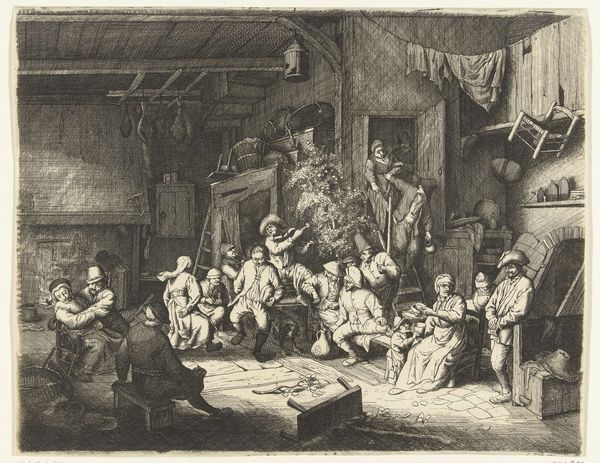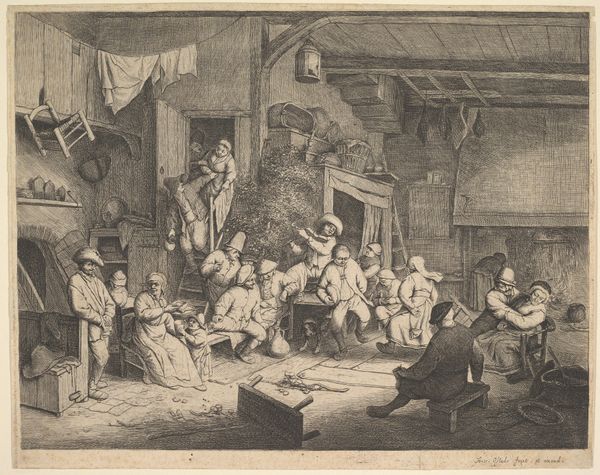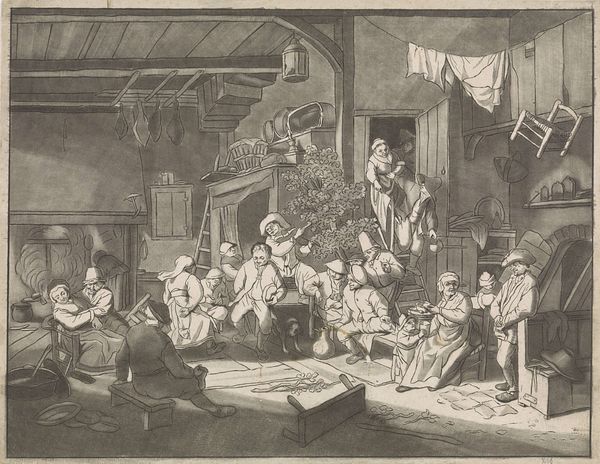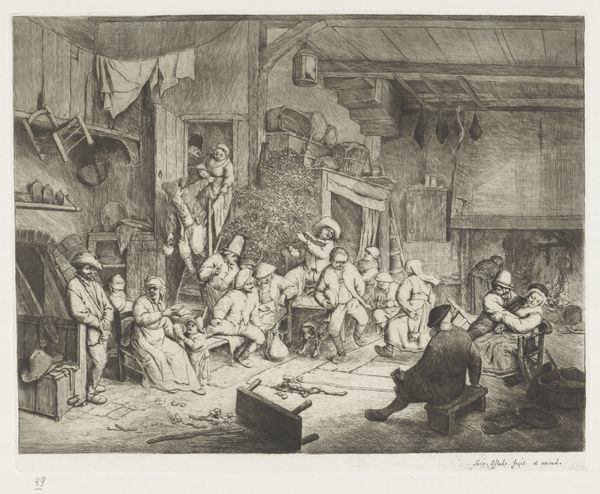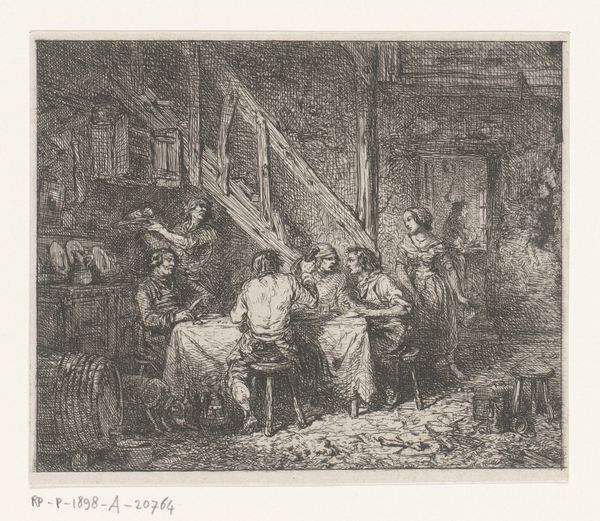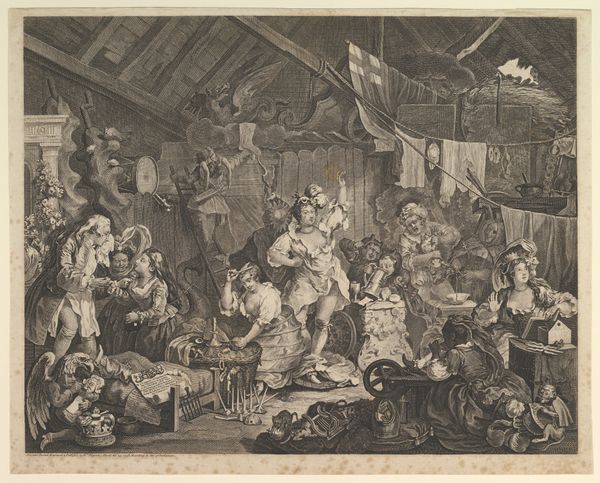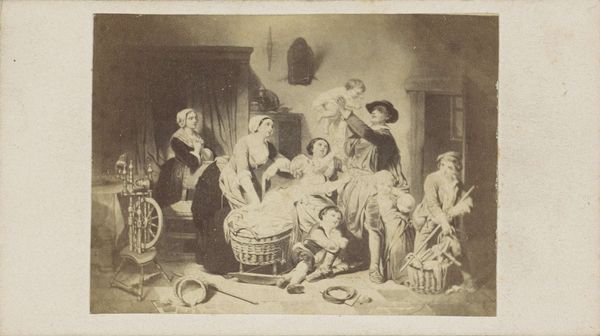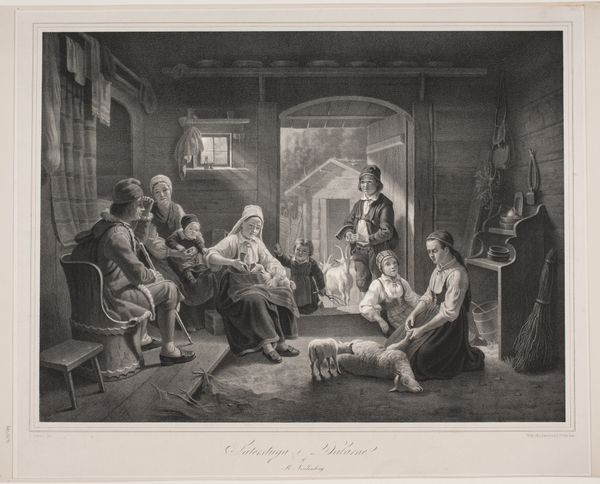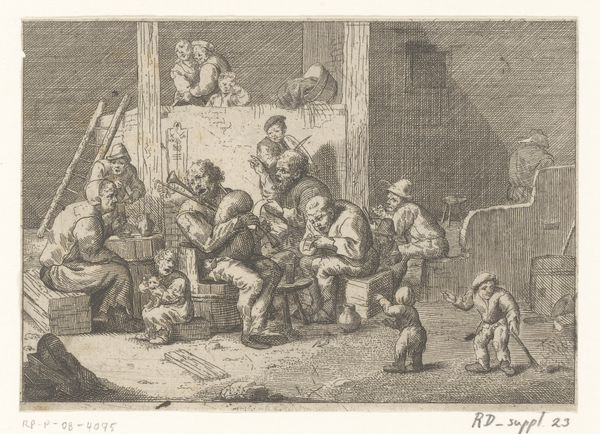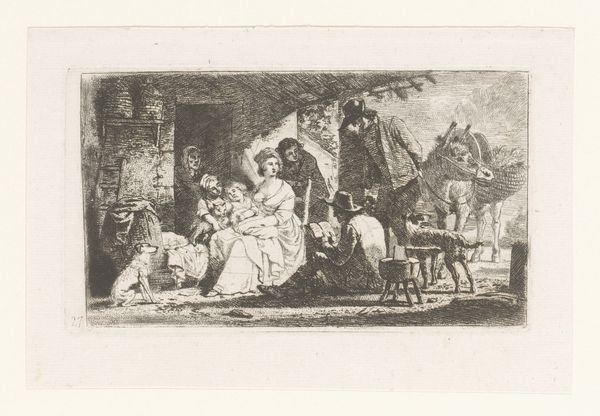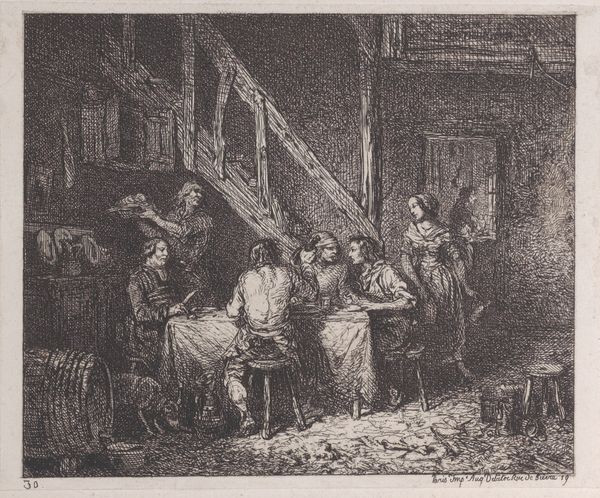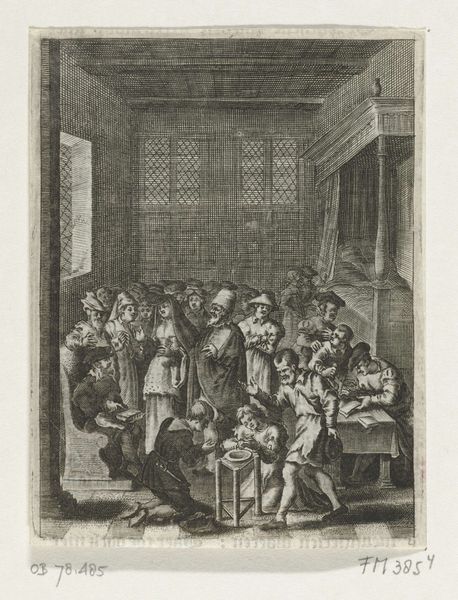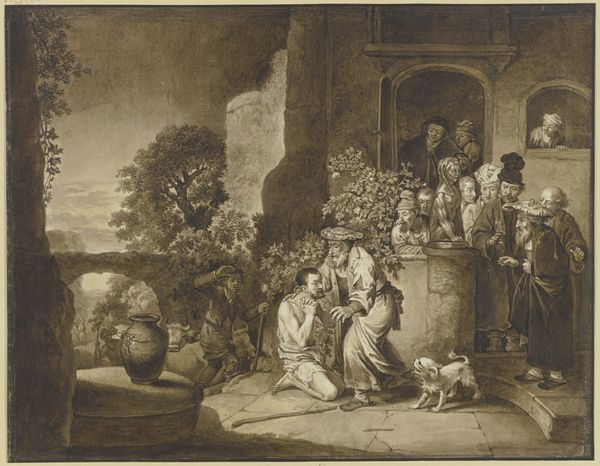
En bondefamilie samlet om bordet og foran pejsen 1667
0:00
0:00
print, engraving
#
baroque
# print
#
genre-painting
#
history-painting
#
engraving
Dimensions: 240 mm (height) x 307 mm (width) (bladmaal)
Curator: What strikes me immediately is the sheer activity depicted. A boisterous communal scene rendered with remarkable detail for a print. Editor: Indeed. This engraving, "En bondefamilie samlet om bordet og foran pejsen," or "A peasant family gathered around the table and in front of the fireplace," was created in 1667 by Claudine Bouzonnet Stella, after a work by her uncle, Jacques Stella. It is currently held at the SMK, the National Gallery of Denmark. It feels as though the composition itself mirrors the way labouring and socializing intersect here. Curator: Exactly! Looking deeper, the print becomes a powerful illustration of familial roles and communal bonds within 17th-century peasant society. There’s a woman breastfeeding, children playing near the hearth. Editor: Consider the material circumstances depicted – the large hearth dominating the left side, ostensibly used for cooking, as the origin of sustenance and heat within this rural context. And note how close the family is to it: work and domestic life become inextricable in ways that challenge any romanticized ideas of a leisurely domestic sphere. Even their table, placed in proximity to their dishes in the wall, conveys how intrinsic eating, drinking, and perhaps selling have become to their daily grind. Curator: That interplay is further complicated if we think about who might have seen and collected prints like this back then. Did wealthy urban patrons, for example, gaze at these prints of a ‘common’ family gathering and think about its meaning and purpose in a society increasingly obsessed with hierarchy? It asks, how does domestic labour operate in the imagination of both artist and viewer? How are power dynamics expressed through such scenes? Editor: From a material perspective, engravings allowed for broader circulation than painting did; and they permitted exact copies, or prints, to proliferate to wider markets and collections of all types of patrons. I wonder to what extent that access changed perceptions of daily life among varying socioeconomic strata. And look how carefully the labor-intensive craft of printmaking recreates the conditions of domestic labour: detail replicating detail! Curator: Yes, exactly. We are also able to consider not only what is seen, but how it may shape broader perceptions and stereotypes within various levels of a rigid society that relied upon the economic status of laborers for survival. Editor: Ultimately, Stella’s engraving illuminates the interconnected nature of work and social bonds in daily life. Its reproduction through print form invites us to ponder the material, and symbolic exchange between social spheres across space and time. Curator: The ways those spheres are both blurred and defined—a potent message echoing across centuries.
Comments
No comments
Be the first to comment and join the conversation on the ultimate creative platform.
